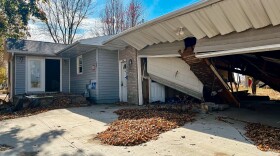-
NextEra Energy’s proposed reopening of the Duane Arnold nuclear plant in eastern Iowa is drawing mixed reactions. Local leaders laud the potential economic boost associated with the development, while environmentalists and some residents warn of concerns related to nuclear waste storage and water supply.
-
Nearly 200 science faculty from 26 colleges and universities across Iowa endorsed the 15th annual Iowa Climate Statement, which warns of higher homeowner insurance costs due to a warming atmosphere.
-
The central Iowa community of Perry officially opened a $30 million treatment plant that helps meet the state’s goals to reduce pollution from wastewater. City officials said it also increases their capacity to attract new companies and accommodate residential growth.
-
A fertilizer spill killed hundreds of thousands of fish in southwest Iowa last year. Now, a group of locals are building a network of citizen scientists and advocates for clean water.
-
The Polk County Board of Supervisors voted to support a network of water quality sensors in rivers and streams across Iowa. They hope other counties will follow suit to prevent a funding cliff next year.
-
Beaches at two dozen state parks and recreation areas had at least one "swimming not recommended" advisory this summer because of high E. coli levels. Years-long efforts at the Iowa DNR aim to pinpoint potential sources, better understand the health risks for beachgoers and find solutions.
-
Renewable energy from wind and solar rose to 67% last year in Iowa. But tariffs and a rollback on federal tax credits could dampen momentum.
-
The Iowa Department of Natural Resources hosted a public meeting and hearing Wednesday on a wastewater permit amendment requested by Interstate Power and Light. Several environmental groups argue the draft permit allows Alliant Energy, the parent company, to bypass a federal law passed in 2024.
-
The Iowa Department of Natural Resources discovered two pallid sturgeon for the first time in the lower Des Moines River earlier this year. The ancient fish is considered one of the rarest and most endangered species in North America.
-
Iowa cities are receiving significant settlements from chemical companies to address "forever chemical" contamination in drinking water. But officials caution that the funds may not cover all associated costs, as long-term solutions remain uncertain.
Play Live Radio
Next Up:
0:00
0:00
Available On Air Stations










